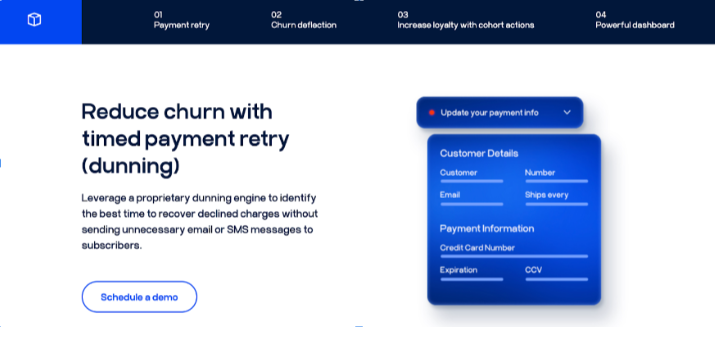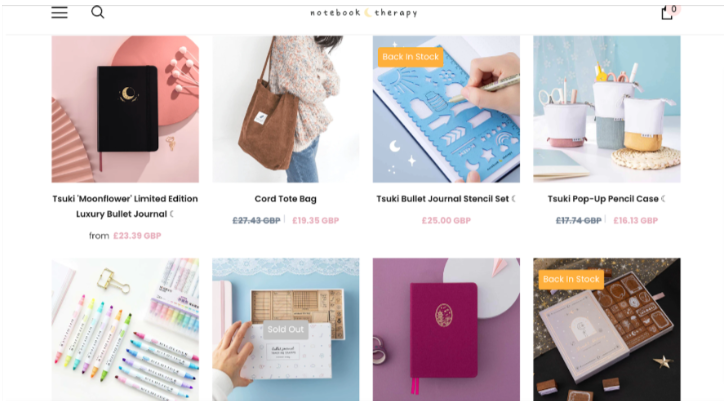The Best Ways to Make Money on Shopify

Founded in 2006, Shopify has become the backdrop for countless e-commerce success stories – from the biggest brands to the smallest independent businesses. Even iconic brands like Pepsi, Tesla and Gymshark use the platform.
Shopify has made it so that anyone who wants to make money in the world of ecommerce can, without having to worry about setting up and hosting their own site. Shopify makes it easy for anyone to create their own online storefront.
Having said that, since the platform’s founding, more and more ways of making money on the site have emerged.
We’ll examine these methods in more detail, and answer the question, is building a Shopify store a good way to make money? But prior to examining that, let’s dive into what Shopify is.
What is Shopify?
Established as a platform to sell snowboarding equipment, Shopify is now an ecommerce platform that allows anyone to set up a store online. It now powers millions of online stores in over 175 countries.
Shopify makes this process as seamless as possible, offering handy tools like customizable templates to build your ecommerce business page and making it easy to set up ecommerce essentials like inventory management, payment processing, and shipping.
More than offering ease of use, hosting your ecommerce store on Shopify is cheaper than hosting and building a website yourself. This simplicity and low overheads are what draw many entrepreneurs to the platform.
One of Shopify’s great advantages is the ease with which third-party apps like Upscribe can be integrated into the ecommerce experience and add value to your digital store. Apps exist to cover every possible service your store might need, including Chatbots that improve customer service, email and SMS marketing for Shopify, and subscription management software like Upscribe.
Shopify Store Examples
Four Sigmatic

Using one of Shopify’s eye-catching templates, Four Sigmatic has developed a thriving ecommerce store on the platform. Selling a small range of quality, plant-based products, Four Sigmatic employs a subscription-based business model tailored to the protein needs of their customers.
By working with subscription business growth brand Upscribe, Four Sigmatic increased their active subscribers by 50%.
Ready, Set, Food!

Ready, Set, Food! Is a business striving to reduce allergy rates in children by introducing allergens into their diets safely. To achieve this tolerance to allergens, the brand recommends that the products are consumed over 6 months. This makes regular monthly deliveries of the product essential to its efficacy.
As such, a subscription model is vital for this business, making tools like Upscribe – which reduces subscription businesses’ churn – essential. By collaborating with Upscribe, Ready, Set, Food! increased their margins by 35%.
Beekeeper’s Naturals

Beekeeper’s Naturals is a brand committed to delivering nourishing, clean health remedies. The brand offers subscriptions for its products, so its customers don’t have to worry about when to buy their next fix. This made scaling their subscription program with Upscribe a no-brainer.
Top Ways to Make Money on Shopify
1. Set up an ecommerce store
The most straightforward way to make money on Shopify is to set up your own ecommerce store.
Shopify makes it super easy to start selling your products online. Even someone completely new to the world of ecommerce can do it.
Shopify takes you through everything you need to do to set up your ecommerce store.
This includes:
- Creating pages for your Shopify site
- Adding the products you want to sell
- Configuring shipping and tax
- Setting up payment
There’s a ton of potential to earn big on Shopify. However, you should learn all you can and employ strategic tools to make your Shopify ecommerce store a success.
Upscribe can boost your Shopify store’s success. Upscribe helps Shopify storefront owners scale and grow their subscription business.
Upscribe helps brands reduce churn with timed payment retry (dunning) and facilitates smart cancellation flows to deflect churn – providing alternatives like gifting a subscription when a customer cancels.

2. Start dropshipping
Dropshipping is similar to setting up an ecommerce store of your own, with one major difference.
Instead of storing, shipping and sometimes manufacturing the products you sell on your Shopify store, outsource these processes.
In other words, you only need to set up your Shopify store and advertise products from a dropshipping-friendly platform like AliExpress, to start making money from selling online.
Setting up a dropshipping business on Shopify is easy. You can create a product catalog on your Shopify store – along with the price point you choose – and connect to your chosen dropshipping network through the platform.
Then, when a customer places an order through your Shopify store, it will be redirected to your supplier. You’ll pay the price of the item advertised by your supplier, and the difference between this and what your customer pays is the profit you’ll make on the sale.
So, if your supplier advertises a product for $80 and you sell it for $110, you’ll earn $30.
There are tons of dropshipping stores on Shopify – like Notebook Therapy, which markets and sells notebooks and other stationary, through their site, although their dropshipping partner sources, stores and ships their products.

Print-on-demand (POD) is similar to dropshipping but targeted at creatives. Artists and creators use a Shopify store for advertising their own designs printed on T-shirts, mugs, water bottles, phone cases, hoodies, wall prints, tote bags, or even jigsaws. The actual production and shipping of products are done by a POD company that holds digital templates created by the artist and prints the products only once they’ve been ordered.
POD services like Gelato offer the opportunity for artists and creators to monetize their designs without needing to hold stock. This drastically reduces costs and wastage, so is often marketed as an eco-friendly approach to running a design-focused business with a smaller carbon footprint.
3. Affiliate marketing
Affiliate marketing is a business model in which ‘affiliates’ are paid a percentage of revenue from products they promote and sell.
Numerous ecommerce businesses – including Shopify, Amazon and Etsy – offer affiliate marketing programs. Those who enroll are provided with affiliate links to share with their audience and each purchase made through the link qualifies the affiliate to earn a commission.
A number of Shopify stores have affiliate marketing programs that you can enrol in. When you’re accepted, you’ll be given affiliate links to share with your audience and the more sales are made through your links, the more you’ll earn.
On the other hand, if you’re a Shopify store owner and want to benefit from some free advertising and promotion for your Shopify ecommerce store products, you can start your own affiliate marketing program on the platform.
By working with affiliates with large followings or online publications, you can further your store’s reach – in exchange for giving affiliates commission, of course.
4. Monetize social media traffic
Social commerce has become huge. 54% of people have already made a purchase from Instagram, and this percentage grows year by year.
As such, social media platforms are great to establish your business’ presence and brand personality, as well as advertise and sell products.
Shopify allows you to make use of your existing audiences across social media, and turn your socials into sales channels. Even with the platform’s starting plan, you can add ‘buy now’ links to your social media content, so your customers can buy your products directly from your social media page.
Thanks to Shopify’s ability to integrate with social media, you can run your business primarily on social media, while Shopify runs admin – like tracking orders and inventory – in the background.
Whether you run your social commerce business through Facebook, Instagram, TikTok or another platform, you can find the integration app you need on the Shopify App store.
5. Flip Shopify stores
For this Shopify money-making method, you’ll need a little more experience.
To flip Shopify stores, you’ll first need to build a profitable ecommerce store on the platform. Then, once you’ve proven that your Shopify store can generate revenue reliably, you can sell – or ‘flip’ – your business for profit.
If you can get good enough at building ecommerce or dropshipping stores on Shopify, flipping Shopify stores is a lucrative way to make money on the platform. Successful, smart-looking Shopify stores generating a healthy revenue can sell for upwards of $1 million.
So, once you’ve got to grips with how to build a successful ecommerce business on the platform, building more and flipping them can be a great way to make money on Shopify.
6. Become a Shopify expert
Shopify allows their customers – a.k.a. people with Shopify stores – to connect with different industry experts who can help them with different aspects of their business.
These can be experts in marketing and sales, in-store set-up, branding and visual content, content writing, and more.
If you’re experienced in any of these niches, you can set a price for the jobs you complete and work with a range of Shopify merchants to bring about their vision.
7. Develop custom resources for Shopify sellers
There are millions of ecommerce stores hosted on Shopify; it’s thought that there are close to 4 million stores hosted on the platform.
In other words, it’s incredibly popular – and demand for Shopify-centred resources and tools is high, since everyone wants to achieve success on the platform (and will use any resources available to accomplish this).
Here are some examples of Shopify resources to inspire you:
- Blog with Shopify tips and tricks
- Inventory calculator
- Dropship directories
- Shopify micro SaaS
8. Freelance writing
Another of the less obvious ways to make money on Spotify is to write.
Specifically, you can write blog content – or even product descriptions – for Shopify merchants.
Blog content can include ideas, thoughts, and information that relate to products, how they improve the user’s life, and the lifestyle and values the company supports. They should speak to the reader’s interests, and their audience should come away feeling they learned something new. This promotes confidence that the company has an in-depth knowledge of their subject and that their products can be trusted.
Product descriptions are important to help customers understand what products do and how they work. Online purchases are impossible to touch, feel for quality, or try on for size, and products not matching descriptions is one of the main reasons for high levels of returns of goods bought online. A good product description is needed to deliver this information. Descriptions should be clear and concise with zero fluff if they’re to deliver conversions.
Both blogs and descriptions need to be highly SEO-aware in order to boost exposure and raise the company’s ranking in search engines.
You should browse through the Shopify stores you’re interested in writing for. Then, approach your chosen merchant to explain why you’d like to write for them, what experience you have, and the value you have to offer their Shopify site.
You’ll have the most luck with Shopify stores that already have a blog. Even more so if they don’t have loads of posts, as this suggests that they don’t have enough time to do it themselves and could use a helping hand – make sure to convince them this should be you.
9. Create and sell online courses
Selling online courses has become a staple of online moneymaking – and for good reason.
Once you’ve put in the time to create your course, an unlimited number of people can purchase it, making courses a potentially infinite source of passive income.
You can create a course about anything. However, to maximize the profitability of your course, the skill you teach should be in high demand. This will make your course more popular and generate higher sales.
Though Shopify itself isn’t designed to host online courses, it has expansive integration possibilities – including online course platforms like SkillSuite and LearnWorlds.
These integrations make creating courses on learning platforms easy. With them, you’ll be able to display your courses as products on your Shopify store. Then, anyone interested can click the course, pay through Shopify and redirect to your site.
10. Pop-up stores
Shopify point-of-sale (POS) apps make it possible to use your Shopify online store to manage a physical pop-up store. Pop-up shops take many forms. You could:
- Rent a booth at a craft market or art fair
- Take a short-term lease on an empty store in a mall or highstreet
- Build a booth at a local food market
- Put up a tent at a music festival
- Convert a shipping container into a mobile retail space
- Rent a micro store with a space like Brik+Clik
With the face of the high street changing post-pandemic, there’s a wealth of retail spaces that are hopping on the pop-up bandwagon and signing up with short-let agencies like these. Pop-up space lets understand you might just be trying out a bricks-and-mortar version of your online store or renting a space in a trendy neighborhood for a specific product drop – even for just a few hours.
How do you rent a physical space? There’s a website for that – in fact, there are many. Peerspace has locations across the US, while PopShop, AppearHere, and StoreFront focus on major cities like New York and LA.

Source: PopShop
Set up your laptop with your Shopify storefront and you can manage POS, stock and physical payments without having to set up any of these separately from your online presence.
A pop-up allows you to interact in person with your customers – a great way to learn about what they like and to help with ideas for new products or lines.
11. Sell digital products
Digital downloads don’t just include e-books anymore. You can sell sewing and embroidery patterns, spreadsheet templates, sheet music and more — without having to worry about managing inventory, shipping or supplier relationships. Depending on your skill set, you can also accept orders for custom logos, label designs, templates and other digital products.
Several Shopify apps facilitate digital downloads, including one designed by Shopify itself. If you’re selling a service, be clear in the product listing about how much work you’ll do for each price and what the customer will receive when you’re done. Shopify recommends creating custom email templates to communicate with customers who’ve made purchases.
NFTs (non-Fungible Tokens) are currently most used to demonstrate ownership of digital art. They exist on blockchains and are traded using cryptocurrencies. NFTs can now be sold by Shopify stores with Shopify Payments, opening up a new line of income generation that never leaves the digital realm. NFTs can be created (known as “minting”) within Shopify using one of several apps available on the Shopify App Store. Customers can also use ownership of NFTs to access discounts and offers using token-gated commerce on your Shopify store.
Also existing entirely in the digital realm, Shopify sees the Metaverse as an area for growth in its Commerce Trends 2023 report. Creating and selling 3D digital models as products, including avatars and associated clothing and accessories, or even building venues that avatars exist in, such as virtual offices, conference rooms, and homes. The AstroMall app provides the tools to establish your Shopify store within the Metaverse and start creating and selling all things digital to customers inside the Metaverse.

Currently, big brands like Nike and Gucci (above, in the Zepeto Metaverse store) are the major players in ecommerce within the Metaverse, but it’s only a matter of time before the trickle down effect reaches other Shopify stores too.
12. Offer product photography services
The one thing that every Shopify store needs is high-quality product photos. If you’re an experienced photographer with a studio or have proven experience creating quality images of your own products in a home studio, you can sell your expertise on freelance platforms like Upwork and Fiverr.
Models and influencers also advertise their services to model and demo Shopify products, creating digital photo and video assets to use in a store.

Product photography should cover both standalone images on a white background and pictures of products in use to give customers the fullest information about what they’re buying and why it will improve their lives. Images of product use provide context to customers and make it easier to decide if they’re making the right purchase choice.
13. Sell print-on-demand products
Print-on-demand is one of the best ways to make money on Shopify if you have a creative side. You can design your own products, and you don’t have to worry about carrying any inventory. This makes it a low-risk business model that anyone can get started with. Here’s how to get started on Spotify:
Choose a print-on-demand provider. There are many different print-on-demand providers available, so it’s important to compare them and choose one that fits your needs. Some factors to consider include the products they offer, their pricing, and their shipping policies.
Design your products. Once you’ve chosen a print-on-demand provider, you can start designing your products. You can use your own designs, or you can find designs that are available for free or for purchase.
Market your products. Once you have your products set up in your Shopify store, you need to market them. You can use social media, search engine optimization (SEO), and paid advertising to reach your target audience.
Take inspiration from Gooten that offers a variety of customizable products, including unique items like calendars and dog beds. They use an international network of vendors to print their products, which can result in variance in quality and shipping. However, this also means lower prices. Gooten also provides an intuitive image editor to preview the final product.

14. Develop a Shopify app or theme
If you’re a developer, developing a Shopify app or theme can be a great way to make money on Shopify. There is a large market for Shopify apps and themes, and there are many ways to market your app or theme. Here’s how to get started:

Choose a platform. There are two main platforms for developing Shopify apps and themes: Liquid and React. Liquid is the older platform, but it’s still widely used. React is a newer platform that’s becoming increasingly popular.
Learn the platform. Once you’ve chosen a platform, you need to learn how to use it. There are many resources available to help you learn, including the Shopify documentation and the Shopify Partner Program.
Create your app or theme. Once you’ve learned the platform, you can start creating your app or theme. You can use the Shopify App Store as a guide to see what kind of apps and themes are popular.
Submit your app or theme to the Shopify App Store. Once you’ve created your app or theme, you can submit it to the Shopify App Store. The Shopify App Store team will review your app or theme and decide whether to approve it.
Market your app or theme. Once your app or theme has been approved, you need to market it. You can use social media, search engine optimization (SEO), and paid advertising to reach your target audience.
Here are some examples of popular Shopify apps and themes:
- Oberlo: This app allows you to import products from AliExpress into your Shopify store.
- Shopify Payments: This app allows you to accept payments directly through your Shopify store.
- Drift: This app allows you to chat with customers on your website.
- Bold: This theme is a popular choice for fashion stores.
- Shoptimized: This theme is a popular choice for e-commerce stores.
Conclusion
There are tons of ways to make money on the Shopify ecommerce platform – or as a professional adding value for Shopify merchants.
As the platform grows even further in the coming years, we can expect that many more methods will emerge for ambitious online entrepreneurs to take advantage of.
If you set up your own ecommerce store on the Shopify platform – and decide to offer your products on a subscription basis – you should consider collaborating with Upscribe.
Upscribe works with fast-growing subscription businesses to scale, offering them the tools they need to maximize their active subscriptions and reduce churn.